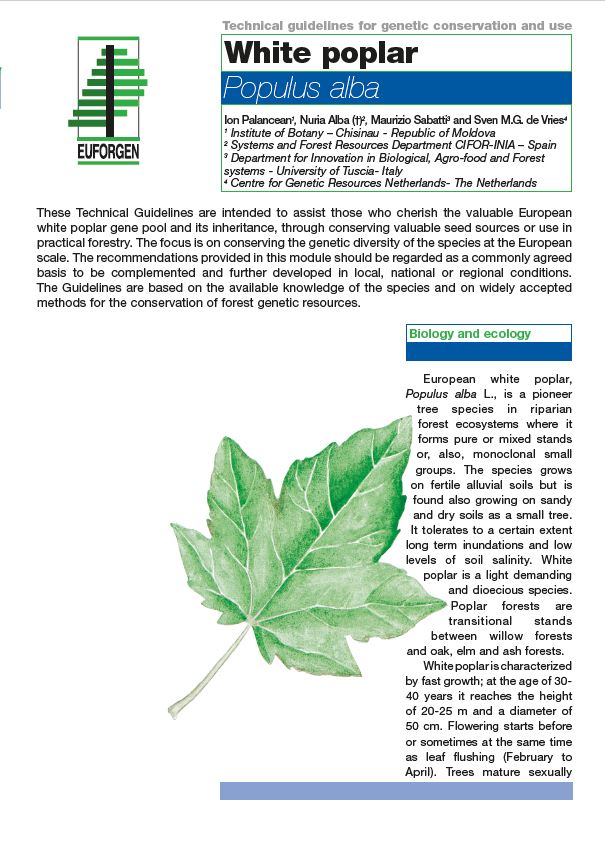Populus alba - Technical guidelines for genetic conservation and use of white poplar
As a general objective, the conservation of genetic resources should maintain the adaptation potential of species and populations. Static ex situ conservation is a widely applied strategy for short term conservation to preserve genotypes in ex situ collections or genebanks. Dynamic in situ conservation is preferable when the objective is long-term gene conservation and maximization of the adaptive potential of a species. This can be achieved through in situ conservation of native stands (including restoration of stands), long-term breeding programmes or both. Successful in situ conservation of white poplar in Europe primarily depends on the location and protection of its natural habitats.
The conservation units should be distributed throughout the distribution range of the species, preferably including more than one conservation site per river-system. A preliminary assessment of the genetic diversity among adult trees in the candidate populations is recommended to conserve a high amount of diversity and a low number of clonal duplicates. Particular attention must be paid to all practices that have an impact on flowering habit and the regeneration process, which determine the effective population size. Conditions for seed-set and seedling establishment should be optimized. The number of flowering and seeding trees provides a practical approach to assess the effective size of a given population. At least 50 fructifying and unrelated trees are required to keep genetic variation at a satisfactory level within a population. If natural regeneration does not occur successfully in some of the units, then supplemental planting with seedlings from appropriate sources might be carried out.
For restored populations, introgression with unwanted genetic material can be limited by creating a “buffer zone” around the population consisting of local male trees. Active management and evaluation of the restored populations are highly recommended and should include replacement of poorly flowering individuals, corrective thinning, new additions to and from the genebanks, and removal of unsuitable individuals.
Authors: Ion Palancean; Nuria Alba; Maurizio Sabatti; Sven M. G. de Vries
Journal/Series:
EUFORGEN Technical Guidelines for Genetic Conservation and Use
Publication Year: 2018
Publication Format: PDF
ISBN: 978-952-5980-44-8
Language: EN
Technical guidelines Populus alba

